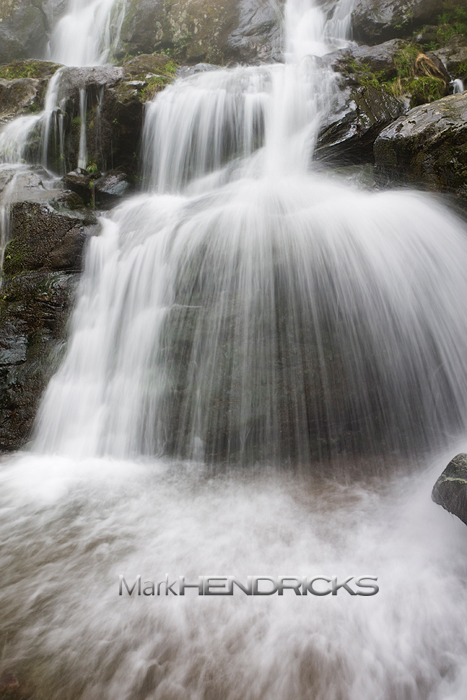I like to write; that much is obvious. However as I prepare to marry the most wonderful woman I have ever known my mind has not focused much on nature writing, nor photography and conservation. Actually the same may be said for eating, sleeping, breathing, and any thing else required to function normally. After my wedding, I plan to be a excellent husband. I swear.
This past week I reunited with my two good friends and fellow photographers, Tom and Muck, at Mile Marker 0 on the Chesapeake & Ohio Bike Trail in Washington DC. They had just completed the entire trail in a matter of days and it was a blast to spend some time with them. These two awesome dudes live in the rugged Alleghenies of North Central Pennsylvania so seeing them was a real treat. As we talked about what we had been up to I mentioned how I spent a few hours with an endangered Delmarva Fox Squirrel a few days prior.
The hamster in my mind finally began to turn that wheel. Of course I should write about the Delmarva Fox Squirrel. That large, gorgeous, but still endangered, fox squirrel is the poster child for the conservation of fauna of the Chesapeake Bay Watershed. Though most people can not discern between the Delmarva Fox Squirrel and its ubiquitous backyard loving cousin.
"Hendricks, I hate squirrels. They're everywhere and they destroy my bird feeders!"
Sorry about that. You should invest in a squirrel resistant bird feeder, and the squirrel you're seeing at a prolific rate is the Eastern Grey Squirrel. The Delmarva Fox Squirrel is a large, almost three feet in length, silver coated squirrel that may only be found on the Delmarva peninsula. Labeled as an endangered species in 1967, the squirrel, whose historic range once extended from southeast Pennsylvania and New Jersey into the entire Delmarva region, had been hit hard by habitat destruction, agriculture, and development. By the time it received its endangered label it only resided in 10% of its former range (all in Maryland).
An Endangered Delmarva Fox Squirrel
I remember fondly the first time I encountered a Delmarva Fox Squirrel at Blackwater National Wildlife Refuge in Cambridge, Maryland. My girlfriend at the time (since upgraded to financee and very soon to be wife) saw a big fluffy silver tail and said "I think I see a Fox Squirrel." It was raining steadily and I was focused on watching a Great Blue Heron stand stoically in a marsh when I instantly moved my gaze towards her and in the corner of my eye I saw a silver furry thing, that looked the size of a house cat, run along the forest ground. It turned around and gave us a humorous look of surprise, complete with wide black eyes and open mouth, then took off. Unlike their counterparts who spend the majority of their time in trees, the Delmarva is mostly a ground dwelling species who only ascends trees to find food and nest.
These shy squirrels, which I find to be more wary of humans than the grey, inhabit the remaining wild mature hardwood-loblolly pine forests of Delmarva. There have been eleven successful reintroduction attempts, including Chincoteague National Wildlife Refuge (the Virginia portion of Assateague Island) and Prime Hook National Wildlife Refuge in Delaware. Presently the Delmarva fox squirrel resides in 28% of its historic range, which is mostly in Maryland. While predation is a major concern on its recovery a large portion of mortality comes from automobile collisions. When driving through wildlife refuges, such as Blackwater, it is normal, and required, to drive at a slow rate of speed. Additional signs informing visitors they are driving through Delmarva Fox Squirrel habitat have been made because of collisions from within the refuges. Yet the future looks bright for this beautiful mammal, so bright that federal official are looking into possibly delisting the species from the Endangered Species. Personally, as much as I want this to happen, I feel more established populations in Delaware are needed before any talk of delisting takes place. Because the populations are isolated from one another, they are more susceptible to being wiped out from a catastrophic event. Thankfully scientists are monitoring potential routes for transient squirrels and the movements of tagged specimens. It is paramount that the squirrels may successfully travel between corridors which are located on both private and public lands.
It was wonderful to spend time with this male Delmarva Fox Squirrel. Initially I had encountered two squirrels earlier who quickly ran across the forest floor to avoid my presence. I watched this squirrel from a distance and observed it climb a tree which allowed me to video it foraging and climbing for about an hour. It climbed down the tree then went deeper into the forrest which led me to conclude that this encounter was over. I had just recorded more footage of a Delmarva Fox Squirrel than I ever hoped to have and felt fulfilled. However a wildlife photographer is ultimately never fulfilled and no more then five minutes down the trail I came across the same squirrel, this time five feet in front of me. The squirrel had grown acclimated to my presence which allowed for intimate portraits, however I want my work to tell a story of a species and I had to back up so I that I could incorporate its environment into my compositions! I take that as a compliment.
The plight of the Delmarva Fox Squirrel is an important chapter in the natural history of the Chesapeake and Coastal Bays, and I hope you are inspired to seek the gorgeous species in the wild. Or at the very least, appreciate that it still roams this land. I take solace in knowing that they can still be found running away from us humans on the grounds of a loblolly pine forrest.
This is perhaps my last blog post until I am married. Obviously this being a very exciting time, I may not get around to writing a blog post in June. My finacee is the best and shares my love of the wild and all creatures big and small. In fact our mutual love of animals is how we met. We will be camping in wilderness for a few weeks and I plan to share a visible diary over the period of a few posts. Thank you for reading and I look forward to sharing the adventure with you as I enter this exciting chapter in my life. Thank you friend.






